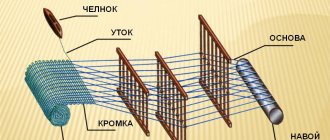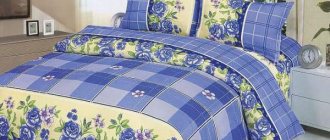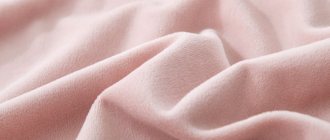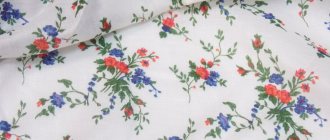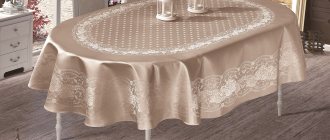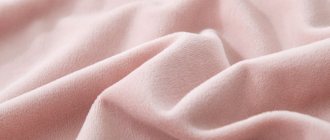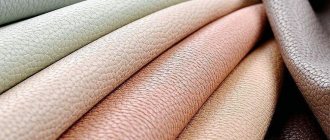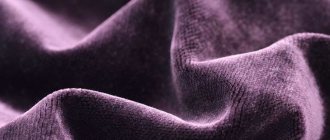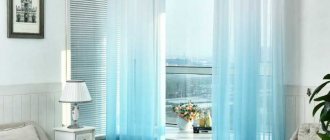Polyester can be found in almost any item in every person’s wardrobe. This material has long been firmly established in our lives. Despite its synthetic origin, high-quality polyester is safe, comes in a variety of shades, has a high level of practicality and is affordable. But does he really have only positive qualities? To answer this question, it is worth understanding what kind of fabric polyester is. The pros and cons of the material and its scope of application are discussed in our article.
Production Features
Polyester production technology was invented in the 40s of the last century. The material was obtained on the basis of oil, gas, coal, acids, alcohol products with the addition of air and water.
The complex technological process of polyester production includes several main stages:
- Identification of the main raw material components necessary for the production of the material.
- Obtaining a melt, which is the liquid base of polyester.
- Multi-level cleaning.
- Obtaining fibers by passing a liquid solution through small holes.
- Their further finishing is to give the threads the necessary qualities.
- Direct production of material.
The variety of properties of polyester fiber is achieved by introducing various changes during its production. Therefore, it is worth considering the main pros and cons of polyester, depending on its further use.
Production
What is polyester made from? Creating polyester, which is a type of polyester fabric, is a complex process. It is a chemical reaction in which many components are involved. Petroleum products are used for production. They have a number of special properties, due to which they are used in light industry both in pure and combined forms. The raw materials are dimethyl terephthalic acid and ethylene glycol. However, the creation methods in each country differ, although the principle itself remains the same. So, what is polyester (polyester) fabric?
Dimethyl ether at a temperature of about 200 degrees undergoes transesterification, while diglycol ester of terephthalic acid at a temperature of 270 degrees undergoes polycondensation to form polyethylene terephthalate resin. Fibers are precisely obtained from this melt.
However, when creating fiber, it is better to use ethylene oxide, which was created by catalytic oxidation. This is necessary, since ethylene oxide obtained through ethylene chlorohydrin almost always contains impurities of hydrocarbons containing chlorine.
Stages of creating polyester:
- synthesis of polyethylene terephthalate;
- fiber creation;
- treatment.
Methods for producing polyethylene terephthalate:
- from terephthalic acid chloride and glycol based on an inert solvent, using an alkaline catalyst;
- during the polyesterification of terephthalic acid and glycol, which is taken in large quantities, using esterification catalysts;
- transesterification of dimethyl terephthalate with ethylene glycol with further polycondensation of the resulting diglycol terephthalate.
The first methods are considered unprofitable due to a lack of materials for production.
The latter has found wide application. It consists of two stages:
- esterification
- polycondensation using antimony trioxide.
As a result of polycondensation, all components (crude, catalysts, additives) are mixed together.
As a result of esterification, esters based on alcohol and acids are obtained. Prepolycondensation and polycondensation are combined into one stage, at which the synthesis of polymers and the isolation of compounds with a low molecular structure occur. Next comes the polystyrene granulation process.
Next comes solid-phase prepolycondensation. At this stage, cooling and sudden heating of the polymers occur. This is necessary to increase their viscosity. However, production is not over yet. The melt is squeezed out through special holes in the machines, cooled again, granulated and sent to create fiber.
The result of such complex operations is the creation of the final product that is used to produce fabric.
We also note the possibility of recycling polyethylene terephthalate waste, resulting in recycled polyester.
Description of material
Polyester is produced both in its pure form and with the addition of cotton, wool, viscose and other fibers. For this reason, the final material may differ radically in appearance and feel. Its surface can be matte or shiny, it can have both a dense and thin structure.
In terms of its characteristics, polyester is similar to cotton, and in appearance - to wool. A high-quality sample of the material does not leave marks on the skin when worn, does not have any odor and does not fade when washed.
This synthetic material is capable of changing shape at a temperature of 40 degrees, but this property is both positive and negative. Thanks to this, the material is ideal for creating the necessary folds on the product. If you do not take this property into account when ironing, you can involuntarily deform the fabric, which will ruin the overall appearance of the item.
This quality should also be taken into account when washing the material. Useful quality of the fabric - polyester is easily washed from dirt even in cool water.
Thanks to these properties, the material is distinguished by its versatility. It is used equally for sewing clothes, shoes, lining, and for the production of blankets, carpets, bags, and backpacks.
Features of nylon
Nylon was conceived as a budget alternative to natural silk. In appearance, to the touch and in operation it strongly resembles the original.
The main characteristics of the material are as follows:
- nylon is very light, but at the same time durable and durable, resistant to various types of external damage;
- the fabric is easy to wash without leaving streaks, dries quickly and does not require careful ironing;
- the fiber is smooth, pleasant to the touch, and looks beautiful - because of this, nylon is often added to other fabrics;
- repels moisture, practically does not get wet.
With all the advantages, there are also a number of disadvantages :
- the fabric is afraid of ultraviolet radiation and is prone to fading when exposed to the sun for a long time;
- can become electrified;
- poorly permeable to air.
Now let's talk about the next material.
Benefits of fabric
Polyester has most of the qualities that consumers value so much. But in its pure form, the material is used extremely rarely, since its combination with other fibers makes it possible to obtain higher quality products.
The main advantages of polyester:
- Wear-resistant.
- Easy to care for.
- Doesn't shed.
- Does not fade under the influence of ultraviolet radiation.
- Doesn't roll down.
- Dries quickly.
- Retains its shape during long-term use.
- Keeps warm.
- Doesn't get wet.
- Does not cause allergies.
- When in contact with the skin it creates a pleasant sensation.
- Resistant to dirt and grease.
- It is easy to paint, therefore it has a diverse selection of shades.
- Does not absorb foreign odors.
- Affordable price.
Polyester combined with other fabrics
When polyester fibers are mixed with any types of threads, new types of materials are formed, for example:
- A mixture of polyamide and polyester forms a fabric that looks like silk. It is elastic, does not deform during prolonged wear, does not fade, but does not allow moisture to pass through and is electrified. Most often it is used in the manufacture of women's underwear.
- In combination with elastane, stockings and tights, tracksuits and gloves are sewn from it. The fabric stretches well, allows air to pass through, but can be of any density.
- When cotton threads are woven with polyester, the fabric becomes stronger, does not wrinkle, unlike natural linen, does not deform and does not fade. In this combination, the material becomes amenable to dyeing in any color, which makes it the best option for sewing bed linen.
- In combination with viscose fibers, the result is a fabric that does not fade or lose its shape after prolonged use. It is used to make casual clothing for leisure, home or work.
It is important to know : for every fiber with which polyester is mixed, it improves the original properties, adding its own positive qualities.
The textile industry continues to surprise its consumers with new types of fabrics every year, but if even a small percentage of polyester is written on the label, the product can be purchased, as it will serve its owner for a long time.
Flaws
Like any other material, polyester has not only pros, but also cons. But this mainly applies only to 100% polyester fiber.
Main disadvantages:
- Increased rigidity.
- The ability to become electrified.
- Cannot be bleached.
- Too dense structure for hot weather.
- Highly flammable.
Despite the existing disadvantages of polyester, it does not lose its relevance, since by combining it with other fibers, all disadvantages are reduced to a minimum.
Polyester based clothing
This material is especially popular in the production of clothing. This is explained by the fact that polyester is easy to dye, and the shades are bright and varied. In addition, synthetic fibers retain their shape well and are resistant to stains, making them ideal for sewing items for everyday use.
The use of polyester in clothing has made it available to a wide range of consumers, since its prices are significantly lower than the cost of natural materials. Items made from synthetic fibers do not require special care. If you follow the manufacturer's recommendations, they retain their qualities and properties for a long time. Polyester is used for sewing dresses, suits, skirts, T-shirts, underwear, hosiery, and lining.
Advantages of things made from this material:
- In appearance they are not inferior to natural products.
- Differ in a variety of shades.
- They do not lose their properties under the influence of ultraviolet radiation, frost and moisture.
- They do not require special care.
- Resistant to stains.
The disadvantages of polyester products include the following:
- Low level of breathability, so it is better not to use them in hot weather.
- Washing at high temperatures and bleaching lead to deformation of products, so it is recommended to carefully study the manufacturer's recommendations on the label.
Based on the pros and cons of polyester clothing, we can conclude that this material is universal in use. Despite its shortcomings, its use in tailoring contributes to the diversification of the range of goods and the reduction of their cost.
Appearance and main characteristics
100% polyester can be a thin translucent veil or a strong raincoat fabric. The appearance and properties of fabric made from polyester fibers depend on the chemical composition of the raw material, the shape of the fiber and the type of weave. Very often, polyester looks and feels like wool, but has properties similar to cotton.
Related article: DIY pen and ink
Polyester Description:
- High degree of protection against adverse weather conditions (low temperatures, wind, ultraviolet radiation, rain and snow). Clothes made from polyester are almost always warm and dry.
- Wear resistance. Polyester fiber is resistant to stretching, friction and other types of physical impact.
- Easy care. Polyester is easy to wash, dries quickly and hardly wrinkles.
- Good drape. The fabric is easy to cut, sew and process.
- Color and shape stability. With proper care, polyester does not fade or fade.
- Light weight.
- Lower cost compared to natural fabrics.
- Protection from pests and mold. 100% synthetics will not interest moth larvae or other insects.
- Good water-repellent properties. In addition to protecting against precipitation, this quality prevents stains.
- Low elasticity. Thanks to this, the fabric does not stretch, and the clothes retain their shape well.
- Does not absorb odors.
Changing shape under strong heating can be attributed to both the disadvantages and advantages of the fabric. On the one hand, this provides additional opportunities when designing clothes or decorating. After all, to get all the necessary elements, it is enough to heat the fabric, form and fix the desired fold. On the other hand, careless ironing can result in an unwanted crease or fold in the clothing, which will be impossible to get rid of.
Thick knitwear, openwork lace, warm lining or smooth elastane are obtained by using different methods of connecting fibers and weaving threads. A variety of fabric textures will satisfy the most fastidious fashion designer.
Cons and weaknesses:
- High density. It is important to remember that the properties of pure polyester clothing make it not very comfortable to wear in hot weather.
- Inability to use chemical bleaches. Polyester fiber may break down.
- Electrification. Synthetics accumulate static electricity, which can cause dust particles to stick to clothing, and the fabric itself is attracted to the skin. These disadvantages can be easily eliminated if you use an antistatic agent or a special fabric softener. Many manufacturers add fibers with an antistatic effect to the thread composition.
- Some rigidity of the material. Sometimes elastane or cotton is added to make it softer.
- If the technology is violated, polyester fiber can cause allergies. When buying clothes, you need to remember that too cheap polyester can be harmful to health.
- The fiber is difficult to dye.
Related article: DIY sleep bandage
Pros and cons of polyester thermal underwear
Thermal underwear is underwear that maintains normal body temperature and helps remove moisture into the upper layers of clothing.
Wool and polyester are often used to produce thermal underwear. Unlike natural material, synthetic fiber allows you to maintain the required body temperature not only in winter, but also in summer. This is achieved due to the fact that polyester with special additives is able not only to retain heat, but also to cool the skin from overheating during the heat.
This quality of material is especially important for professional athletes who experience physical activity constantly and in any weather. Therefore, you should familiarize yourself with the pros and cons of polyester when using material for underwear.
The main advantages include:
- Maintaining a comfortable body temperature.
- Easy to wash.
- Dries quickly.
- Has increased wear resistance and strength.
- Does not lose shape with prolonged use.
- Doesn't roll down.
Synthetic fiber underwear also has some disadvantages. It is advisable to take them into account when purchasing these products.
Flaws:
- is electrified, so regular use of an antistatic agent is necessary.
- Requires daily washing as it retains the smell of sweat.
Polyester based shoes
Shoe manufacturers have not ignored this material either. Thanks to the use of polyester in this industry, it has become possible to significantly increase the wear resistance and durability of products. It is often used when sewing sports shoes, since they are subject to increased functional loads.
In addition, the material does not absorb moisture, is resistant to wear and does not require special care. But these qualities are especially important for shoes.
But before you finally make a choice, you should take into account the main pros and cons of polyester shoes.
Main advantages;
- Resistant to temperature changes.
- Preservation of shape and color.
- Moisture resistant.
- Durability.
- Strength.
- Affordable price.
- Possibility of manufacturing any model.
The disadvantages of polyester shoes include low breathability, although this problem can be solved by choosing more open models or using products in the cool season.
Important Takeaways
Polyester is a unique fabric with a number of undeniable advantages. To make it, it is necessary to carry out a complex chemical reaction. However, this does not stop manufacturers.
In addition, this material is considered the most popular among synthetic analogues. It is wear-resistant, inexpensive and easy to maintain.
Have you ever come across products that literally fascinated you with their softness and practicality? It turns out that fleece fabric, which is discussed in our article, has these advantages.
If you prefer beautiful natural materials, then cambric with embroidery is an excellent choice. Let's look at its positive qualities using this link.
What are they - the fabrics of the future? Let's look:
© 2021 textiletrend.ru
Application when sewing outerwear
In this case, polyester is used in three different versions: for the top of the products, lining and insulating filler. This versatility of use has allowed manufacturers to significantly improve the quality of outerwear, reduce their specific weight, increase heat conservation and reduce cost.
The most popular filling for polyester-based outerwear is holofiber. This material is distinguished by its lightness, porous structure and high heat transfer. It is important that it retains its properties and shape during washing and long-term use.
Most often in the store you can find demi-season and winter jackets made of polyester. The pros and cons of these products should be studied in detail so that when purchasing a person is confident in their choice.
Advantages:
- Ease.
- Strength.
- Easy to care for.
- Preservation of its properties if there is snow, rain, wind, or frost outside.
- UV resistance.
- Heat retention.
- Low percentage of creasing (does not wrinkle).
- Abrasion resistance.
- Immunity to organic solvents.
The disadvantages of polyester-based outerwear include the fact that when washed above 40 degrees, the products lose their shape and acquire an unsightly appearance. Therefore, the main condition for the durability of polyester products is compliance with the manufacturer’s care recommendations.
Features of care
Even though polyester is durable, it needs to be properly cared for. Washing can be done using a washing machine, but some exceptions may apply. Therefore, carefully study the information on the label. If it says hand wash, first prepare a soapy solution based on warm water.
Washing takes place in water whose temperature does not exceed +40°C. To wash workwear, you can set the temperature to a higher temperature, since the fabric fibers are impregnated with a special mixture.
Polyester cannot be washed with bleach. It is advisable to use only powder and fabric softener, which will make the fabric softer. Air conditioners also reduce electrification rates.
It is not necessary to iron polyester products. You can just shake them a little and hang them to dry.
Polyester is a fairly popular synthetic material that has a large number of advantages. According to reviews, it is easy to care for and has a fairly wide range of applications.
Polyester blankets
In the production of blankets and pillows, polyester is used as a filler for products. This makes them lighter, improves heat transfer and significantly extends their service life. In addition, polyester blankets and pillows are excellent for transportation, so they can be used on camping trips and long trips, as they do not take up much space and do not weigh down luggage.
The advantages of a polyester-based blanket include:
- Ease.
- High heat transfer.
- There are no parasites.
- Durability.
- Minimal care.
- Does not cause allergies.
- Does not absorb foreign odors.
- Has high elasticity.
The disadvantage of these products is the low percentage of moisture absorption. They will also make them appear too warm for some people.
Based on the pros and cons of polyester blankets, we can judge that this synthetic material is universal. His invention made it possible to significantly improve the quality of these products and reduce their cost.
Advantages and disadvantages of carpets
Polyester is also used in the production of carpets. This made it possible to significantly expand the range of products offered and increase their service life.
Main advantages:
- Strength.
- Variety of colors.
- Presentable appearance.
- Stain resistant.
- Excellent value for money and quality.
The disadvantages include the inability to use bleaching agents, but this problem can be solved by choosing darker shades of the coating.
Having studied the pros and cons of polyester carpets, we can safely say that these products have a long service life without loss of their qualities, provided that all care recommendations are followed.
